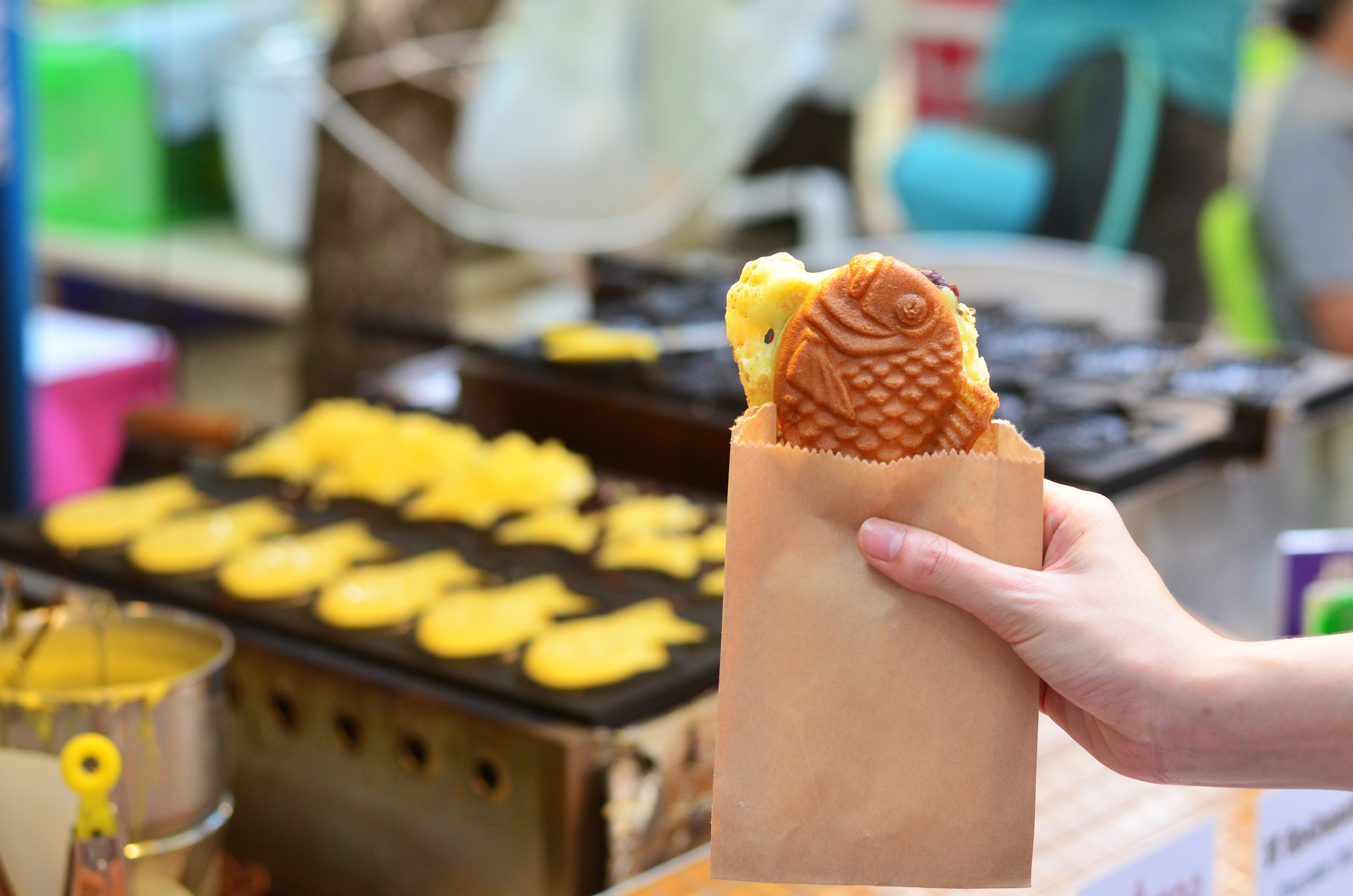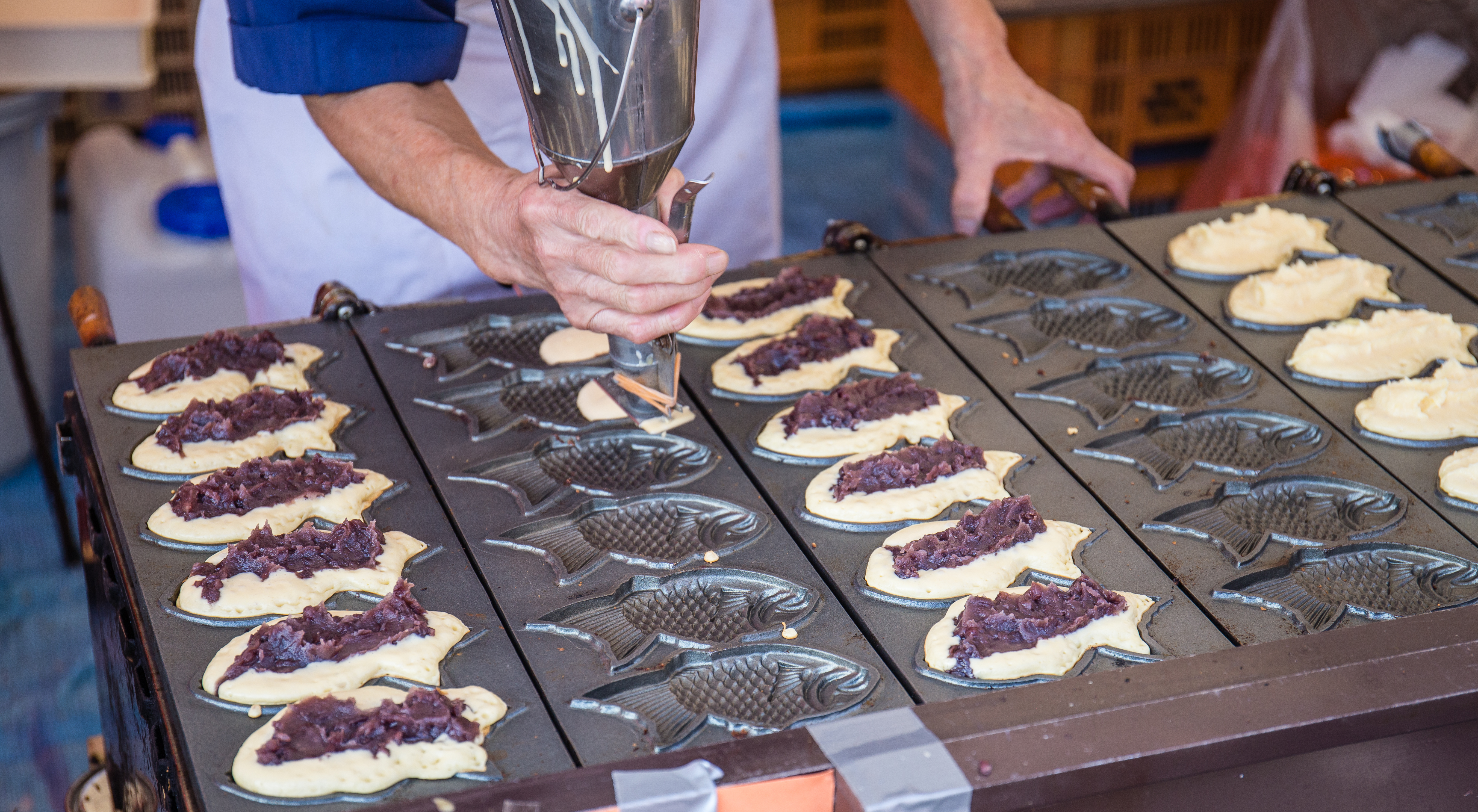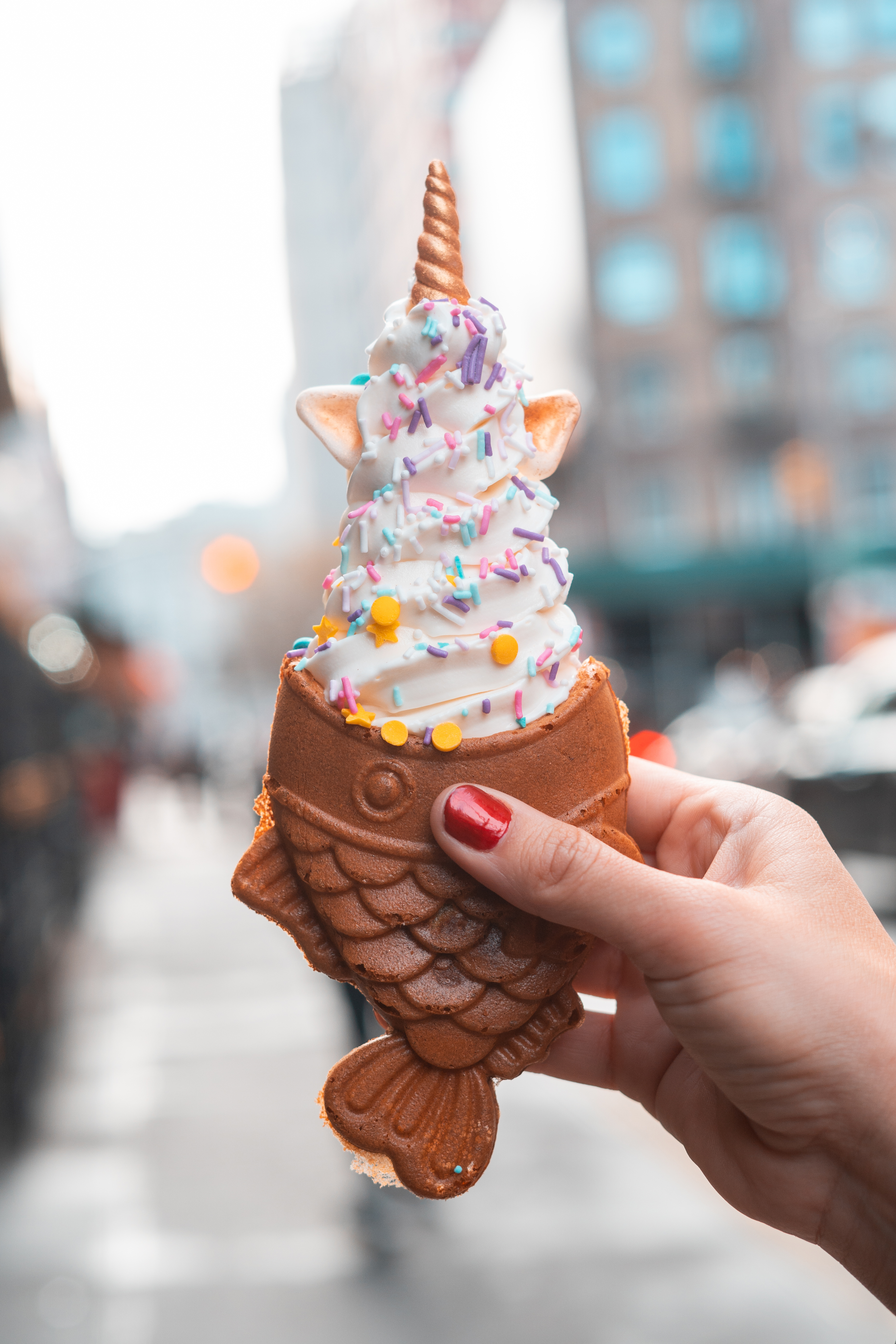
(Image: Shutterstock/Kallayanee Naloka)
Maybe you’ve seen them while visiting Japan: delicious-smelling, fish-shaped waffles, sold hot to waiting customers on the street. While these utterly charming pastries, called taiyaki (鯛焼き), look like they were made for Instagram, they actually originated in Japan in the 1900s. Since then, taiyaki have become a festival and street food favorite in Japan.

(Image: Shutterstock/WorldStock)
Taiyaki literally translates to “grilled sea bream,” but the sweet treat contains no seafood. It is traditionally made from flour and filled with anko, a sweet red bean paste. The batter is poured into a fish-shaped mold, filled with a generous dollop of anko, and cooked until golden-brown and crispy. You can watch a video of taiyaki being made here.
The unique shape of taiyaki is great marketing, but it also holds cultural significance. Historically, red sea bream (真鯛, マダイmadai) was one of the most sought-after fish in Japan, both for its rich taste and its auspicious red coloring. In addition, madai sounds similar to the word medetai (目出度い, めでたい), meaning “auspicious, joyous, or deserving of celebration.” That’s why sumo wrestlers and Japanese politicians have been known to hold red sea bream aloft when celebrating victory. Taiyaki are doubly lucky because of the red coloring of the filling!
While anko has remained a staple in Japanese desserts, the popularity of taiyaki has fluctuated throughout the years. In recent memory, the snack has experienced two spikes in popularity: once in the 1970s, and again in the 2000s, coinciding with the initial release of Masato Shimon’s song “Oyoge! Taiyaki-kun” (Swim! Taiyaki) and its subsequent re-release. The lyrics tell the story of an anthropomorphic taiyaki that flees the taiyaki shop and goes on an adventure in the sea until a fisherman reels it in and eats it--bummer! You can click here to watch a hilariously ‘70s performance of the song by Masato Shimon himself.

(Image: Shutterstock/Manu Padilla)
These days, thanks in part to its social media-friendly appearance, taiyaki have found their way across the Pacific to the United States and Canada. The range of fillings has expanded, too: it’s now possible to find taiyaki filled with custard, chocolate, cheese, tapioca, Nutella, and even soft-serve ice cream! With such variety, it’s hard to imagine the world will stop snacking on taiyaki anytime soon.
Psst! Have you heard about our Superstar Karaoke Contest? Film a karaoke music video by yourself or with your classmates, and you might have a reason to hold up a red sea bream in victory!


Comments